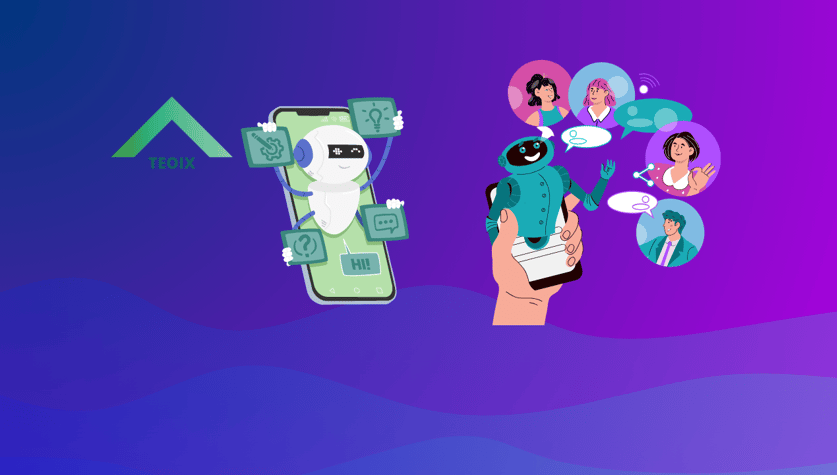AI Chatbots in the Workplace
ARTIFICIAL INTELLIGENCE
5/24/20243 min read


AI chatbots are being added to corporate settings in addition to their exterior uses, with the goal of improving worker productivity and streamlining processes. The following are a few ways chatbots are changing the workplace:
Employee Assistance:
Chatbots act as employees' virtual assistants, assisting them with a range of duties like email management, reminders, and meeting scheduling. They can help lessen the administrative load on HR workers by offering prompt responses to questions about benefits and leave regulations.
Onboarding and Training:
Chatbots can help new hires navigate the onboarding process by offering pertinent information, responding to inquiries, and even leading their first training sessions. By ensuring a seamless and effective onboarding process, speeds up the process by which new personnel get adjusted to their responsibilities.
Internal Communication:
By giving immediate access to tools and information, chatbots can improve internal communication. They can assist staff members in connecting with coworkers, locating documents, and staying up to date on company news. This encourages a workforce that is better informed and connected.
Project Management:
AI chatbots assist in project management by tracking project progress, setting deadlines, and sending reminders to team members. They can integrate with project management tools, providing real-time updates and ensuring that projects stay on track.
Innovations and Emerging Trends
The future of AI chatbots is being shaped by a number of new trends and breakthroughs that are constantly developing in the area.
Conversational AI:
Chatbots can have more complex and human-like conversations when conversational AI technologies are integrated, such as OpenAI's GPT models. The user experience can be enhanced overall by these models' ability to produce coherent and contextually relevant responses.
Multimodal Interactions:
Text-based interactions won't be the only way that chatbots engage in the future. To construct multimodal interfaces, they plan to integrate voice, video, and possibly gesture recognition. More immersive and natural interactions will be possible as a result, especially in applications for virtual assistance and customer support.
Emotional Intelligence:
Scholars are striving to improve chatbots' emotional intelligence so that they can recognize and react to users' emotions. Emotionally intelligent chatbots can assess text sentiment, facial expressions, and voice tone to give more appropriate and sympathetic responses.
Domain-Specific Expertise:
To serve particular markets and fields, such legal, medical, and technical help, specialized chatbots are being developed. These chatbots can offer professional guidance and assistance since they are well-versed in their specialized industries.
Integration with IoT:
Chatbots will communicate with linked devices more frequently as the Internet of Things (IoT) grows. To improve the usability and ease of Internet of Things systems, a chatbot might be used to monitor industrial machines, handle smart home gadgets, or oversee office supplies.
Ethical Considerations and Future Challenges
As AI chatbots proliferate, a number of ethical issues and difficulties need to be resolved to guarantee their responsible use:
Disclosure and Transparency:
Users should always be conscious that they are communicating with a chatbot. Unambiguous disclosure keeps consumers safe from deception and helps to manage expectations. Building trust also requires ensuring transparency in the data collection and use processes of chatbots.
Fairness and Bias Mitigation:
It is the responsibility of developers to find and remove biases in chatbot algorithms. To guarantee that every user is treated fairly, this entails utilizing a variety of training data, routinely monitoring chatbot performance, and putting fairness standards into practice.
Security and privacy:
User data must always be protected, especially when chatbots are handling sensitive data. Protecting user privacy and averting data breaches require the use of strong security measures, such as encryption and secure authentication.
Regulatory Compliance:
When it comes to data security, consumer rights, and AI ethics, chatbot creators have to follow rules and guidelines. Chatbots can only function legally if their operators keep up with changing regulatory requirements.
Human Oversight:
Even though chatbots are capable of performing many activities on their own, human oversight is still required, particularly in delicate or complex situations. Maintaining service quality and confidence can be achieved by making sure users have the option to escalate to a human representative when necessary.
In summary
From their humble origins, AI chatbots have advanced into strong instruments that improve customer support, expedite corporate processes, and offer insightful support across a range of industries. Because of their capacity to comprehend and produce human language as well as the ongoing developments in AI technology, chatbots are becoming essential tools in today's digital environment.
AI chatbots seem to have infinite potential as we move into the future. Chatbots will get even more powerful and adaptable as conversational AI, emotional intelligence, and multimodal interactions continue to advance. However, utilizing AI chatbots to their full potential responsibly requires addressing ethical issues, maintaining openness, and retaining human control.
In the end, the use of AI chatbots in our daily lives and workplaces is a big stride in the direction of a world that is more responsive, efficient, and interconnected. Chatbots will continue to influence how we engage with digital systems as technology develops, opening up new opportunities and changing how we communicate with computers and one another.


